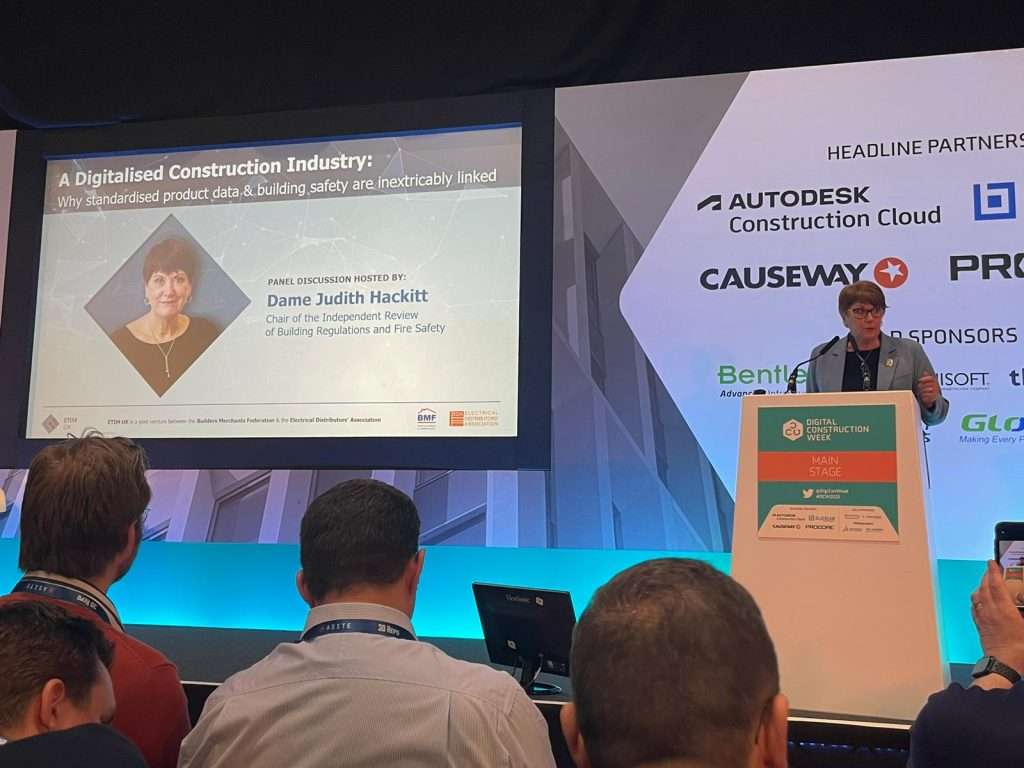This year Associate Director, Veronica Ruby-Lewis, attended Digital Construction Week (DCW) 2023 on behalf of Waldeck; a conference committed to driving architecture and design, construction, engineering, and operation forward by focussing on new technology that can improve project delivery and team collaboration.
Following the event, we caught up with Veronica to hear more about her top industry insights to take away.
Veronica shares:
“This year’s programme had a lot on offer, it was great to attend some very insightful presentations across the various stages.
“Seminars of particular interest for me were in relation to the Building Safety Act, including ‘Building Safety Act 2022 – How Digital Solutions can help Industry Unleash the Potential of the Golden Thread’ and ‘The Golden Thread to ESG: The Built Environment’s Opportunity & Calling’.”
In summary, her top 3 insights from the event covered the ‘Golden Thread’, Technologies and a Digitalised Construction Industry:
- The ‘Golden Thread‘
As the UK construction industry prepares for the Building Safety Act to arrive later this year, a key topic at DCW was the ‘Golden Thread’, a term which emerged following Dame Judith Hackitt’s independent review of the Building Regulations and Fire Safety in response to the Grenfell devastation.
Hackitt’s recommendation for the government to mandate a digital (by default) standard of record-keeping raised some questions about how the industry goes about delivering it.
It has been made quite clear, that whilst the government has detailed what information shall be made accessible within this Golden Thread, it is important for the industry to not wait around in the hope that the government will mandate how we deliver it, as this isn’t going to happen.
The Golden Thread isn’t an ‘off-the-shelf software solution’, the standards have been set by government and are what we must adhere to, but it is up to us, being the duty holders to determine what tools are used to deliver against those standards, hence why the industry has such a wide range of tools available.
2. Technologies
Amongst the array of talks across the various stages, the new asset management stage had an inspiring session on the restoration and renewal of the Palace of Westminster, thought to be the biggest restoration challenge the UK industry has seen!

The presentation showcased the power of available technology today, and how it can be leveraged for one of the UK’s most complex historic building renovations, demonstrated through:
- Retrospectively creating a fully operational physical asset; recreating a detailed Revit model from 10,000+ scans, with integration, and analysis of data from sensors or other sources to monitor and optimise the performance of an asset.
- Optimising geometry for real-time interrogation; Revit models comprising only of data rich components to aid decision making, whilst utilising the point cloud data as the backdrop to aid locating and navigation.
- Enhancing internal spaces; utilisation of machine learning to turn 2D images into 3D models.
- Engaging stakeholders; creating interactive digital environments to improve understanding of a building, aid decision making, and rehearse construction scenarios.
3. Digitalised Construction Industry
It is extremely clear that ‘Building Safety’ is a driver for a digitalised construction industry, with standardised product information being key to minimise risk, but how do we move to this?
A panel discussion, chaired by Dame Judith Hackitt, with representatives from across the construction process highlighted the mammoth task of sifting through existing product data so that only useful data is shared with the supply chain.

As a result, with the designers having all the data available to them about a product from the manufacturer, they would be able to make the decision and select the right product, meaning the industry could see what is being designed as actually what is being built.
Final Thoughts
Veronica concluded:
“One of my key takeaways from the day, is that the industry plays a pivotal role in the safety of occupants, and the Building Safety Act 2022 ensures tragedies, such as Grenfell, do not happen again.
“In addition to this, and as discussed in one of the sessions ‘The Golden Thread to ESG: The Built Environment’s Opportunity & Calling’, what we at Waldeck, other consultants across the industry and our clients must now do is take this opportunity to look at environmental and social considerations in design that impact occupants directly or indirectly, such as energy efficiency, adoption of renewable energy sources and public spaces to name a few, going some way to meet the UK’s sustainability targets.”